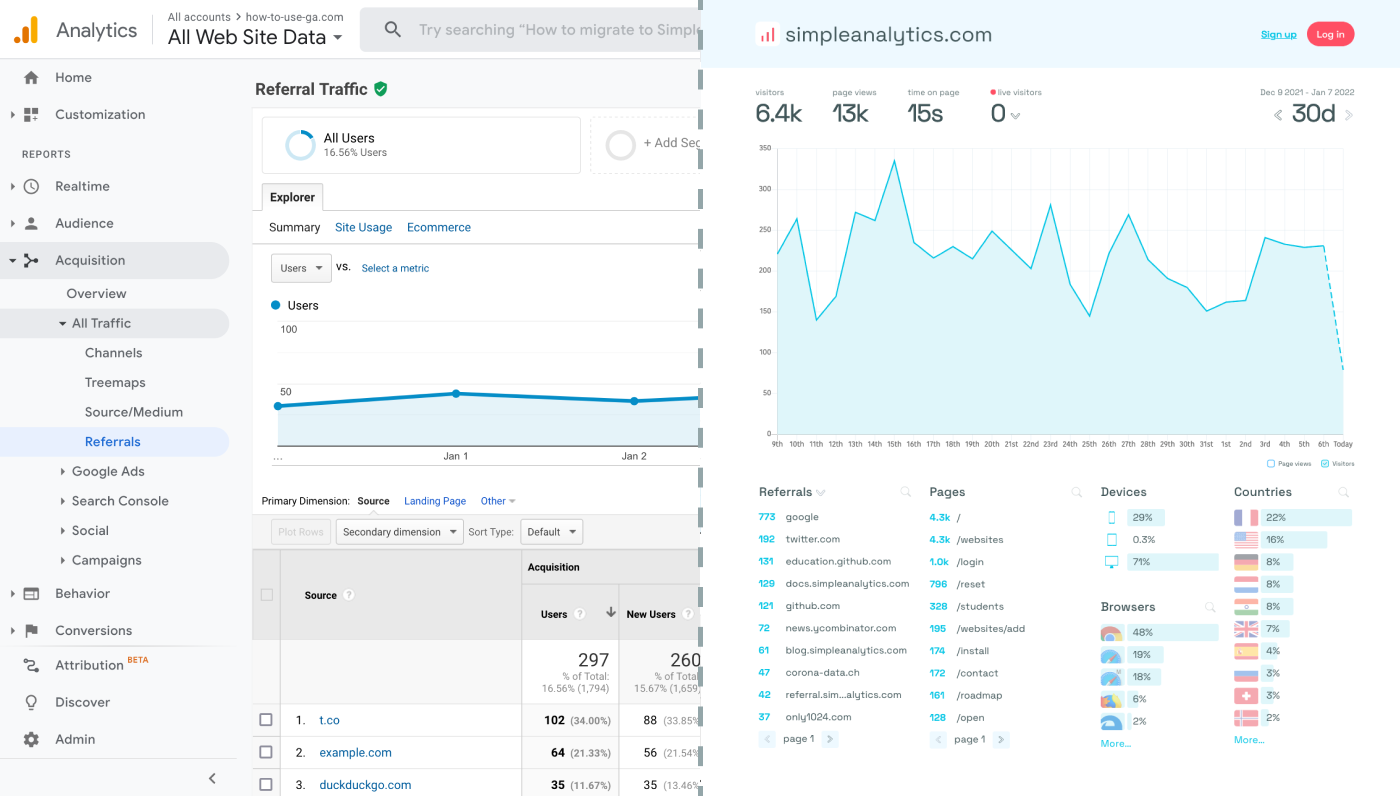Google Analytics can provide useful insights by tracking and analyzing your website traffic. Here is how to integrate it with Joomla, step by step.
Let's dive in!
Before we dig in I want to show you something. I promise it's worth it...
Google Analytics is great, but also complex and a bit clunky. If you just want a straightforward dashboard with the insights you need, GA is not a great place to start. Additionally, Google doesn't care about privacy and GA requires an annoying cookie banner.
That's why I built Simple Analytics, a privacy-friendly and simple analytics tool - no personal data, no cookies, just the insights you need in a straightforward dashboard.
Here is how it looks vs GA. Feel free to check our live analytics to get an idea for your project. (It is free btw)
All right, enough about us. Now let's get into answering your question!

Step-by-step integration
Set up a Google Analytics property
- Log into your GA account (or create one, if you haven't already).
- Create a GA property for your app.
- Inspect your property and note its Measurement ID. You will need this ID later.
Choose a Joomla Analytics Extension
There are various extensions available for integrating Google Analytics with Joomla, such as 'Joomla Analytics', 'Asynchronous Google Analytics', or other similar plugins. These extensions often provide additional features and easy integration.
Install and Activate the Extension
Go to your Joomla dashboard, navigate to 'Extensions' > 'Manage' > 'Install', and install the chosen extension. After installation, ensure that it's activated.
Configure the Extension
Most extensions will have a settings area where you can enter your Measurement ID". Follow the extension’s documentation for specific configuration steps.
Verify the Setup
Check your Google Analytics dashboard to confirm that data is being received correctly.
Test the Integration
After deploying the changes, verify that your website is correctly sending data to GA. Use tools like Google Analytics Debugger in Chrome for real-time debugging.
(Optional) Create New Properties
To track multiple websites, create more GA properties and use the corresponding Measurement IDs. This prevents GA from conflating the data.
Final Thoughts
Adding Google Analytics to your website can give you great insights. However, ask yourself: is Google Analytics the right tool for you?
GA is an overpowered solution for straightforward analytics. If you're looking for a simple and intuitive dashboard with the insights you need, there are better alternatives. Yes, I’m talking about my own product (Simple Analytics), but there are others out there as well.
I hated using Google Analytics for my projects. It's clunky, there are hundreds of dashboards and it doesn't look appealing. Also Google doesn't care about privacy or ethics. That's why I decided to build my own and more intuitive web analytics tool.
If this resonates with you, feel free to give Simple Analytics a spin. You just need to add the script to your site and off you go. This takes about one minute- and there is a free version as well!
Enjoy!
